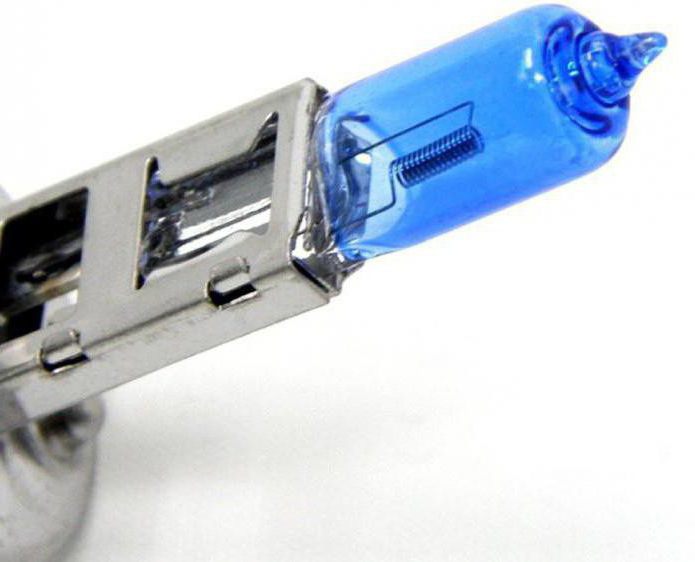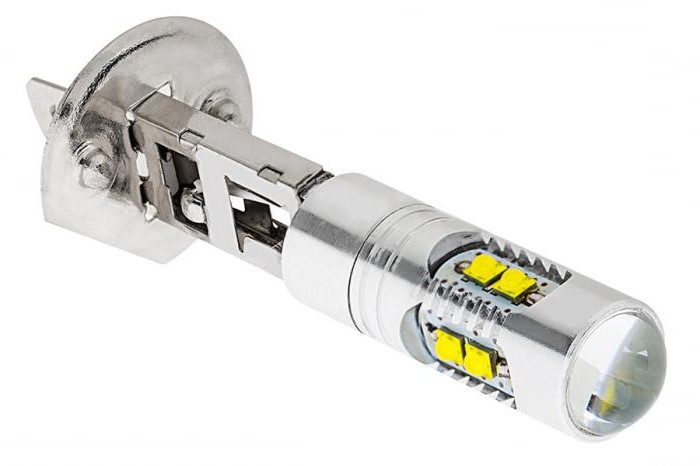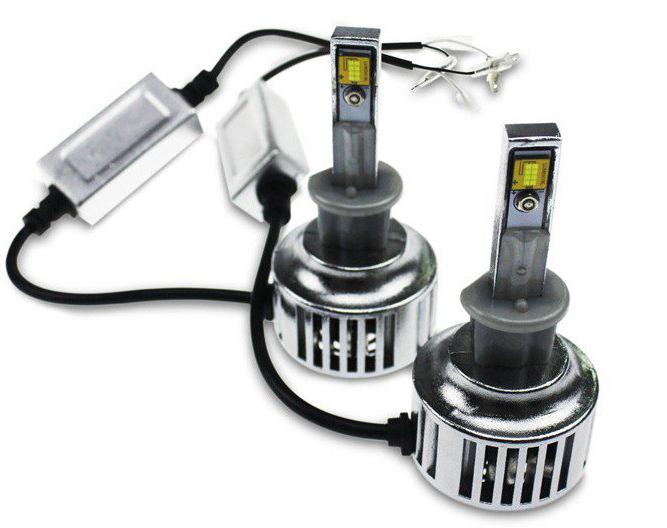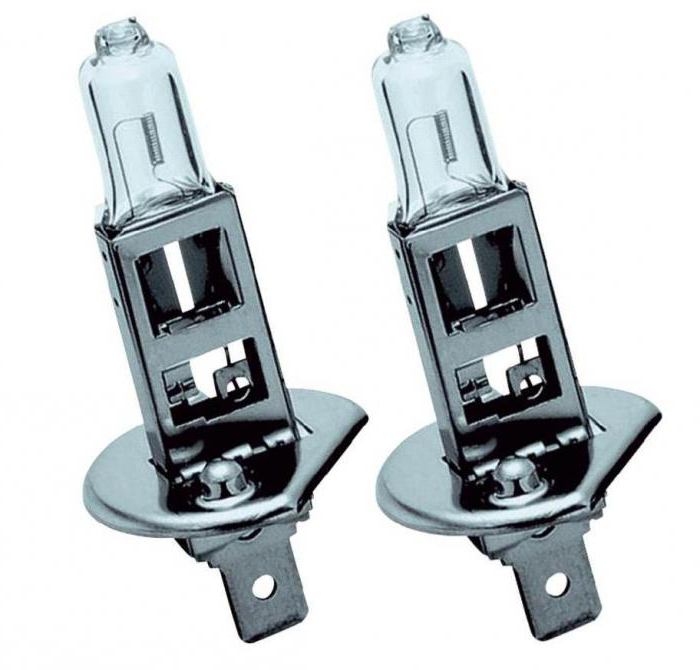Any car is equipped with dipped and main beam headlights. The lighting system is an essential attribute of every car. The better the beam of light, the easier it is for the driver to analyze the traffic situation. No need to explain how the quality of headlights affects the number of accidents at night. Now widely used with a base H1 lamp. In this article we will talk about what are the types of lighting solutions and what are their features.
Plinth characteristics
It is worth noting that this is not the only type of base that is used in the car lighting system.
In addition to marking H1, the lamp can be H7, H11, H4 and other varieties. In our case, a product with such a base is installed in:
- Far light.
- Near.
- Fog lights.
Varieties
There is a difference between the lamp device itself. There are several types of products:
- LED bulbs H1.
- Xenon.
- Halogen.
The latter were born first. We will talk about them below.
Halogen
The first light bulbs of this type were linear. Initially, the design used an inert gas. Over time, the design of the product has improved. Now H1 halogen lamps are a glass bottle, inside which there is a buffer gas.

Usually these are bromine vapors or iodine halogens. For the first time, such a design was introduced by the engineers of the German company OSRAM. The peak of popularity of products fell on the 80s and 90s. On some budget cars with an H1 base, the lamp is still used.
How it works?
This product is powered by the car's on-board network. The electricity that is supplied to the lamp passes through the tungsten filament. As a result, it heats up and illuminates the diffuser. A beam of light is directed onto the roadway. A halogen lamp with an H1 base works at elevated temperatures. Only under this condition will the spiral illuminate the road well.
Why is halogen becoming a thing of the past?
Since such a lamp is very hot, its service life is not more than a thousand hours. With the introduction of new laws that oblige you to drive with the dipped headlights on, using such optics is simply unprofitable. It quickly burns out and fails. Also, many car owners do not like the glow temperature.
The H1 auto lamp shines in the range from one and a half to three thousand Kelvin. This is ordinary daylight, often giving off yellowness. Light output characteristics are no more than 22 lumens per 1 watt. Even modern products are not able to shine white like LED and xenon counterparts. But about them a little later.
It is worth noting that the Philips H1 halogen lamp or OSRAM is one of the cheapest on the market. Analogues with a white glow are several times more expensive. Also, the daylight that the tungsten filament produces does not affect the diffuser. It does not fade even when the lamp heat is high.
Xenon
Now let's talk about how xenon H1 lamps differ. They appeared relatively recently. They began to gain great popularity after the zero years. The principle of operation of xenon is based on the ignition of an electric arc.

Inside the glass bulb is a special gas - xenon (hence the name). The product has two electrodes, which, when interacting with the gas, produce a huge beam of light. It is worth noting that the normal on-board network of the car is not able to turn on the H1 xenon lamps. For this, an ignition block is used. It generates a voltage of 25 kW. As a result, the lamp produces a good and bright light. It is 3-4 times more powerful than halogen counterparts.
As for the temperature of the light flux, it ranges from 4 to 6 thousand Kelvin. The characteristics that the xenon dipped beam lamp with H1 base has deserve attention.
Xenon Features
Why has he become so popular? This optic is highly efficient. H1 lamps of this type are able to "pierce" any fog. They illuminate the road especially well in the rain, where halogen is simply useless. The service life of these products is up to 2.5 thousand hours. All due to the lower heating temperature. If for halogen lamps 40 percent of the energy is converted into heat, then for xenon lamps - only 7.
About the disadvantages
Not always xenon is legal. If you install such optics not at a specialized service station and without paperwork, a fine is due for this. Also, if this xenon is not factory, you will not be able to pass a technical inspection. In other CIS countries, such tuning does not provide for such fines. In Russia, driving with xenon is only possible if it is installed at the factory. The next disadvantage is the complexity of the installation.

Since a special block is required to light the lamp, it must be placed somewhere. Often a hole is drilled in the back cover of the headlight and the wires are pulled through. The block itself is installed outside the headlight, in the engine compartment. If the lamp is used in foglights with an H1 base, it is important to achieve tightness of all connections. Otherwise, the PTF will flood at the first rain. As for the cost, the original xenon (set) can be purchased for 5-10 thousand rubles. Halogen headlights win in this regard. And, of course, after installation, it is required to re-adjust so as not to blind oncoming drivers.
LED bulbs H1
A couple of years ago, LED solutions appeared on the market. This is a completely new, revolutionary development.  LED lamps are developing rapidly. The element consists of a crystalline semiconductor mechanism and an optical system. Also in this lamp there is a non-conductive substrate with contacts. The distance between the crystal and the lens is filled with transparent silicone. Such an H1 lamp does not heat up, while providing a wide range of glow temperatures - from 1500 to 6000 K. There is no need to use an additional ignition unit. The element is installed in place of a standard lamp. The main benefit is legitimacy. LED products are not prohibited in the Russian Federation and can be installed on any car. At the same time, the headlight does not blind oncoming drivers. It costs the same as xenon solutions.
LED lamps are developing rapidly. The element consists of a crystalline semiconductor mechanism and an optical system. Also in this lamp there is a non-conductive substrate with contacts. The distance between the crystal and the lens is filled with transparent silicone. Such an H1 lamp does not heat up, while providing a wide range of glow temperatures - from 1500 to 6000 K. There is no need to use an additional ignition unit. The element is installed in place of a standard lamp. The main benefit is legitimacy. LED products are not prohibited in the Russian Federation and can be installed on any car. At the same time, the headlight does not blind oncoming drivers. It costs the same as xenon solutions.
Problem areas of LEDs
It would seem that H1 LED lamps combine all the advantages of xenon, while being easy to install and absolutely legal. But it is worth noting one feature of the diodes. These are power surges. Surely you installed similar products in dimensions. After a few months they stopped working. But how is it, because the service life of LEDs is 10 years?
It's simple - the element is afraid of power surges that so often occur in a car. Therefore, modern LED solutions are equipped with regulators, or “drivers”, which stabilize this parameter of the on-board network. But even with these devices, the service life of products is no more than a year. In addition to power surges, LEDs are very afraid of overheating. If you buy such lamps, then only with additional radiators.

Without them, the product will quickly fail. And even with such radiators, the LEDs fit easily inside the headlight itself, without additional alterations. This is a big plus.
What is the result?
So, we found out what kind of lamps with H1 base are. What to choose a motorist? It is rather difficult to answer this question. Halogen is obsolete and xenon is not always legal. But the future is clearly with LEDs. In a couple of years, they will force xenon solutions out of the market. After all, the design of LED lamps is constantly being improved. There were additional radiators, voltage regulators. You can take a chance and buy such lamps now. But, judging by the reviews, they will last no more than a year.

Alternatively, reinforced halogen lamps marked White or +130 can be used. These products are distinguished by a higher glow temperature (close to xenon), while illuminating the road no worse than modern diode counterparts. Philips is worth noting as a manufacturer. The company manufactures high-quality lamps with an H1 base and acceptable glow characteristics.



